According to popular legend, Auschwitz was an extermination center organized to kill as many jewish prisoners as possible with the greatest possible dispatch. In fact, though, the authorities responsible for Germany’s wartime concentration camp network carried out extensive measures at Auschwitz, and other camps, to save inmates’ lives. Though for decades widely known among specialized historians,[1] this remarkable story has been unknown to the wider public, and one extraordinary aspect of it has remained secret for decades.
In 1944, during the final year of the war in Europe, the Germans installed and operated state-of-the-art high frequency facilities at Auschwitz to kill disease-bearing lice and other pests. These expensive installations, installed in response to the high death rate wrought by disease, worked on the same principle as the familiar microwave appliances widely used today in households around the world. These Auschwitz facilities, designed to help save lives, proved very effective.
French researcher Jean-Claude Pressac briefly mentioned this remarkable disinfestation facility in his 1994 book about the crematories of Auschwitz.[2] Also, French revisionist scholar Robert Faurisson, in an essay published in 1995, cited the testimony of former Auschwitz inmate Marc Klein, first published in 1946, about “short wave delousing” at Auschwitz.[3]
But the first qualified and detailed look at this subject appeared in two lengthy articles published in 1998 issues of the German-language revisionist quarterly, Vierteljahreshefte für freie Geschichtsforschung, edited by Germar Rudolf. These articles were based primarily on documents buried in the voluminous collection of wartime German records that were seized by Soviet forces in 1945. For more than half a century these important historical records lay forgotten in Moscow’s central archives. (The present article is based in large part on information in these two Vierteljahreshefte articles.)[4]
Typhus Danger
Before dealing directly with the high frequency delousing facilities, it is important to understand the general problem of disease, especially typhus, during the war, and the measures taken by the German authorities – particularly at Auschwitz – to combat the deadly scourges.
Typhus or “spotted fever” (German: Fleckfieber) is transmitted from one diseased person to another by lice infected with a micro-organism (Rickettsia prowazeki). Epidemic typhus flourishes among people in crowded living quarters, including ships, prisons, camps and ghettos, where poor sanitary conditions and bad hygiene prevail.
During the First World War (1914-1918), and even more in the years immediately following, some 25-30 million people in Poland, Ukraine, Russia and the Baltic suffered from typhus, or about 20-23 percent of the total population, of whom several million perished. “At the close of World War I,” the Encyclopaedia Britannica has noted, “the disease was prevalent in Poland, Russia and Rumania, where estimates of cases and deaths between 1919 and 1923 ran into millions. In World War II from these areas it spread again into western Europe and caused devastating epidemics among refugees and displaced persons, particularly in the German concentration camps.”[5] So terrible was the scourge in Poland that the United States dispatched a US Army team to the country, where it carried out extensive efforts to combat typhus among the civilian population, 1919-1921.[6]
When war broke out in Europe in 1939, German medical and military leaders were mindful of the terrible impact of typhus during the earlier conflict, and acted accordingly. At the outset of the Second World War, the most advanced method used to kill typhus-carrying lice was “Zyklon B.” This was the trade name of a pest control agent manufactured from the 1920s to the 1950s by the Degesch company of Frankfurt am Main. “Zyklon” is hydrocyanic or “Prussic” acid (HCN) absorbed in a porous material such as gypsum or diatomaceous earth, which is kept in tightly sealed cans until it is deployed by trained personnel. HCN’s boiling point is 26 degrees C (79 F).
Auschwitz-Birkenau was greatly enlarged in 1943 and 1944 to accommodate the arrival of ever more jews. Accordingly, plans were made for more extensive hospital and quarantine facilities. This plan for a new “Prisoner hospital and quarantine section” in the Birkenau camp’s “Mexiko” section was prepared in June 1943 by the WVHA agency in Berlin that administered the concentration camp system. It was quickly approved by the Auschwitz camp construction department. This “hospital and quarantine” section for 16,596 inmates included surgery, x-ray, delousing, and laundry facilities, as well as barracks for severely ill inmates. (Facsimile in: Jean-Claude Pressac, “Auschwitz” [1989], p. 512, and in “Auschwitz: 1270 to the Present,” by Deborah Dwork & Robert Jan van Pelt [New York: 1996], plate 19.)
This commercially available pesticide was widely used before, during and after the Second World War by private companies, governmental agencies and military forces throughout Europe. It was frequently used by the German armed forces, including the SS, to delouse clothing and other effects, and to kill insects and rodents in buildings.
It is commonly believed that SS men used Zyklon to kill millions of jews in gas chambers at Auschwitz and other German camps. But in fact SS men used Zyklon to help prevent camp inmates’ deaths. They deployed it in very large quantities at Auschwitz and other wartime concentration camps by fumigating barracks, by delousing clothing in special gas chambers, and so forth, to destroy disease-bearing vermin.[7]
Combatting Typhus at Auschwitz
In each German concentration camp, including Auschwitz, a “garrison physician” (Standortarzt) was responsible, together with the other medical personnel, for implementing, coordinating and supervising hygiene and sanitary measures. At Auschwitz during this period, the “garrison physician,” or chief medical officer, was SS Hauptsturmführer (captain) Dr. Eduard Wirths. By all accounts, including the surviving wartime documents, he was a dedicated, kindly, and good-natured man who capably and conscientiously carried out his demanding duties in the large camp.[8]
When typhus broke out in the Auschwitz camp for the first time in the summer of 1942, the German authorities there responded resolutely. In an effort to halt the disease, Commandant Rudolf Höss ordered a full-scale quarantine (vollständige Lagersperre) of the camp in July 1942. SS men and their families were not allowed to leave the camp area. As the epidemic continued to spread, Höss ordered further measures, including delousing actions with Zyklon, a prohibition against SS men and their families eating uncooked fruits and vegetables, disinfections of living quarters, obligatory vaccinations, and further restrictions on movement. Special “louse inspection” units were organized, and those who failed to observe the anti-lice measures were punished.[9]
On July 22, 1942, an official in the central Berlin office responsible for concentration camp administration (WVHA) radioed Auschwitz: “I hereby give permission for a five ton truck to go from Auschwitz to Dessau and back, in order to pick up gas [Zyklon] for gassing of the camp, to fight the epidemic that has broken out.” This was just one of several such deliveries.[10]
But these measures proved inadequate. Even as the camp’s hospital blocks were overcrowded with typhus victims, the disease continued to claim many lives. In early December 1942, SS camp physician Dr. Wirths spoke at a meeting that had been called to address the typhus crisis. Reflecting the seriousness of the occasion, the attendees included local and regional government officials, military officers, and important civilian figures.[11] Wirths reported optimistically that
three large disinfestation, shower and sauna facilities can be put into operation right now, specifically two facilities for the inmates and one for SS troop members. The capacity of these facilities is some 3,000 to 4,000 persons per 24 hours.
Architectural diagram, June 1943, of an “Auschwitz camp barracks for sick inmates.” The barracks has 144 beds, large wash and toilet rooms, and a room for medical staff. (Source: J.-C. Pressac, “Auschwitz,” 1989, p. 513.)
The central WVHA office in Berlin-Oranienburg, which was responsible for the SS concentration camp system, sent a secret directive on December 28, 1942, to every concentration camp, including Auschwitz and Majdanek (Lublin). After sharply criticizing the high death rate, it ordered that
camp physicians must use all means at their disposal to significantly reduce the death rate in the various camps…. The camp doctors must supervise more often than in the past the nutrition of the prisoners and, in cooperation with the administration, submit improvement recommendations to the camp commandants…. The camp doctors are to see to it that the working conditions at the various labor places are improved as much as possible.
The directive concluded: “The Reichsführer SS [Himmler] has ordered that the death rate absolutely must be reduced.”[12]
Richard Glücks, head of the SS agency that supervised the concentration camps, informed the various camp commandants in January 1943:
“As I have already pointed out, every means must be used to lower the death rate in the camp.”[13]
In a letter of February 25, 1943, to the central WVHA office in Berlin-Oranienburg, which was responsible for the SS concentration camp system, Dr. Wirths summed up the situation:[14]
As already reported, after the typhus epidemic in the Auschwitz camp had practically been suppressed in November and December, there followed a new rise in typhus cases among the Auschwitz inmates as well as among troops, brought by the newly arriving transports from the East. In spite of the counter-measures that were immediately taken, a complete suppression of typhus cases has still not been achieved.
Accordingly, the SS camp physician reported that there would be a three-week quarantine of the Auschwitz camp complex, including the main camp and Birkenau. During this period, he continued, two thorough delousing and disinfection operations would be carried out to completely eradicate lice, and thus eliminate the danger of new outbreaks of typhus.
In an April 1943 communication to the camp commandant, Dr. Wirths expressed grave concern about the sewer system in Birkenau, and concluded with a warning that unless appropriate measures are taken, the “great danger of epidemics would be inevitable.”[15]
Diagram of a “high frequency disinfestation facility,” developed and manufactured by the German firm of Siemens-Schuckert. One of these state-of-the-art facilities was installed at Auschwitz in 1944, where it helped save lives. (A portion of the diagram is missing from the middle of this reproduction.)
On May 7, 1943, the Auschwitz chief physician had a discussion with Dr. Heinz Kammler, head of the engineering and construction bureau of the central camp administration office (WVHA), and others, about inmate facilities at Auschwitz. Dr. Wirths warned that[16]
… maintaining the prisoners’ health for the major tasks does not seem certain, due to the poor toilet conditions, an inadequate sewer system, a lack of hospital barracks and separate latrines for the sick, and the lack of washing, bathing and disinfestation facilities.
In his report on the meeting, Dr. Wirths noted that his superiors agreed with his assessment:
The Brigadeführer [SS general Kammler] acknowledges the foremost urgency of these matters, and promises to do everything possible to ensure rectification of the shortcomings. He is somewhat surprised, however, that on the one hand, he receives reports from the responsible medical personnel that give a very favorable account of the sanitary and hygienic conditions, and on the other he immediately afterwards receives exactly opposite reports. The director of the ZBL [Auschwitz central construction office] is instructed to present proposals by May 15, 1943, for rectifying all problems under discussion.
The stationary high frequency delousing facility at the Auschwitz concentration camp, shown in a 1944 photograph.
This commitment by a high-level SS officer is all the more remarkable considering the growing shortages facing the German leadership due to the worsening military situation, which made it ever more difficult to procure supplies, manpower and money to insure minimal hygiene and sanitary standards.
In keeping with this, camp chief physician Dr. Wirths, in a May 28, 1943, letter to the Auschwitz central construction office (ZBL), asked for six circulating air delousing facilities, to be installed as quickly as possible. (These were in fact ordered the next day.) This request, Dr. Wirths explained, was being made
“especially for the delousing and the disinfestation of the sick prisoners and their clothing …”[17]
Because typhus continued to plague the camp complex, even more rigorous measures were imposed in January 1944. Simultaneously, all inmates were subjected to baths and disinfection, all clothes and bedding were sent to disinfection chambers, and all barracks were treated with Zyklon. This unprecedented campaign worked, and thereafter only sporadic cases of typhus were reported.[18]
A Polish inmate-physician, Dr. Alfred Fiderkiewicz, confirmed after the war that the camp administration and the dedicated SS physicians imposed strenuous and sometimes even radical measures to combat typhus in Birkenau, including large-scale Zyklon delousing of barracks and all clothing, improved diets for sick-bay inmates, and action by a special team to combat lice. As a result, the typhus plague was finally brought under control in January 1944, although tuberculosis was never completely eradicated and continued to claim many lives.[19]
High Frequency Delousing Facilities
In 1936, German technicians had noticed that high frequency radio waves produced by a large transmitter tube used to broadcast the Olympic Games from Berlin that year incidentally killed all nearby insects. Spurred by this, the Siemens-Schuckertwerke (Siemens-Schuckert works), together with the Reich Biology Institute in Dahlem, conducted tests on pest eradication using the high-frequency field of an electron tube.
After the problem of pest extermination once again became pointedly relevant following the outbreak of war in 1939, the Siemens-Schuckert company worked on developing a practical high frequency or “shortwave” (Kurzwellen) disinfestation facility. Collaborating with the firm on this project was a related company, the Siemens-Reiniger works in Erlangen, which produced medical instruments.
When this new technology was demonstrated to civilian and military authorities, the SS saw its applicability for large camps and quickly ordered several of the new facilities. (In contrast, the regular German army ordered one such installation, which apparently was never completed or made operational.)
The new high frequency facility was produced in both a mobile and a stationary model. The mobile version was designed to fit on a truck trailer. Operating it required access to a 380-volt electrical outlet or to a portable electrical generator.
At the end of June 1943, Dr. Willing of the construction-engineering bureau of the central WVHA agency reported with satisfaction on the efficiency of the new facility:[20]
… After a pass through the ultra-shortwave field, which takes eleven to twelve seconds, all vermin as well as bacteria, germs, brood and nits are killed, and, given non-stop operation, 13,000 to 15,000 pieces of clothing can be sterilized per day.
Auschwitz Installation and Operation
Although the first high frequency disinfestation facility was supposed to arrive at Auschwitz on May 15, 1943, actual delivery was delayed. In mid-June 1943 the Reich Ministry for Munitions and Armaments assigned top priority to the new high frequency facilities.
At a meeting on July 1, 1943, Dr. Wirths assured colleagues that the stationary high frequency delousing facility would be ready to begin operation at Auschwitz in about eight weeks, and that a mobile facility was to arrive at the camp within the next three weeks. Installation of the mobile high frequency disinfestation unit – each step of which is thoroughly documented – was carried out between July 16, 1943 (commission) and October 21, 1943 (last requisition of materials).
Diagram, titled “Prisoners’ Delousing Building: Installation of the high frequency delousing facility,” of the building at the Auschwitz main camp where the high frequency delousing facility was installed. This diagram was one of numerous German wartime documents that were only recently found in Moscow archives. As the diagram shows, the facility retained the division into “clean” and “unclean” sides that was also a feature of Zyklon B delousing facilities.
The “Osten III” model stationary high frequency disinfestation facility – a modification of the “Osten II” mobile model – was set up in 1944 at the Auschwitz I main camp, in a building (BW 160) that originally was to house 19 Zyklon delousing chambers. It finally went into operation on June 30, 1944, and on July 29, 1944, the director of the SS Hygiene Institute tested its bacteria-killing ability.
Greater Efficiency
Before being treated in the new high frequency facility, the louse-infested clothing was first dampened slightly with a water spray-gun. Then the clothing was bagged into bundles of 12×40 centimeters each and placed on conveyor belts that carried them through the high-frequency generator’s capacitor field. Operating on the same principle as the modern microwave oven, the facility quickly killed all lice and other pests, as well as any typhus-bearing bacteria. The facility could treat 400 kilograms of clothing per hour.
Auschwitz’s new high-frequency delousing facilities immediately proved to be far superior to all other delousing methods of the period, including the widely used method of hydrocyanic gassing with Zyklon B. Treatment of infected clothing with Zyklon required 70 to 75 minutes, and Topf delousing ovens required 60 to 80 minutes per treatment. Disinfestation in gassing autoclaves required a similarly lengthy amount of time. By contrast, the high frequency delousing facility required just seconds to treat infected clothing.
Furthermore, the new technique was much more thorough. It killed not only lice and their eggs (nits), but even the typhus micro-organisms. The new high frequency facility also took much less space, and was markedly less expensive. The cost of installing the “standard” disinfestation facilities in Auschwitz was 153,000 Reich marks, whereas the cost of installing the high frequency facilities there was 75,000 Reich marks or, according to another source, 98,000 Reich marks.
On August 10, 1944, the Auschwitz camp physician reported to the central WVHA office in Berlin-Oranienburg “on the effectiveness of the stationary shortwave delousing facility.”[21] After taking time to train the required personnel, wrote Dr. Wirths, full operation of the facility began on July 5, 1944. The new facility functioned promptly and reliably, and was in nearly daily use. However, it was not operating at peak efficiency, in part because of power outages.
On daily average, he continued, the new facility processed 1,441 sets of underwear and matching garments, and 449 wool or quilt blankets. In other words, he went on, every 32 working days the facility processed the clothing of 46,122 persons, including their underwear and bedding. Under ideal conditions (with no power outages, for example), Wirths stressed, the facility’s performance would be three times greater. Tests carried out in Auschwitz by the SS Hygiene Institute, Wirths continued, showed that treatment in the facility of three minutes per sack of clothing – that is, about 45 seconds for each individual item – completely destroyed all traces of staphylococcus, typhus and diphtheria.
In November 1944 the Auschwitz central construction office (ZBL) reported that “at the present time there is a stationary high microwave delousing facility in concentration camp I [Auschwitz] and a mobile one in concentration camp II [Birkenau].”
The efficiency of these “high tech” Auschwitz facilities, designed to help save prisoners’ lives, contrasts sharply with the absurdly primitive technology of the camp’s alleged homicidal gas chambers, supposedly meant to kill prisoners. As Holocaust historian Jean-Claude Pressac has written, the (supposed) homicidal gassing procedure at Auschwitz-Birkenau crematory facilities IV and V, for example, was cumbersome, “irrational and ridiculous.”[22]
Auschwitz was not the only German concentration camp to receive one of the new “high tech” delousing facilities. In the fall of 1944, a stationary high frequency facility similar to the one at Auschwitz was installed at the Mauthausen camp (near Linz). At that same time, a mobile high frequency delousing facility arrived at Gusen, a satellite camp of Mauthausen, in response to an outbreak of typhus there. Efforts were also made to install a similar stationary facility in the Dachau concentration camp (near Munich), but apparently it was never put into operation.
Development of high frequency facilities continued even as Soviet and American troops were advancing into Germany. A certificate issued by the Reich Ministry for Armaments and War Production on February 22, 1945 – just eleven weeks before the end – noted that although the Siemens-Schuckert works had been evacuated from Breslau (because of the Soviet advance), a new testing and production facility was to be set up in central Germany. The document also stressed that development and production of high frequency devices by Siemens-Schuckert had the highest national priority, and deserved all possible assistance from Party, military and civil authorities.[23]
Summary
Records documenting the Auschwitz high frequency delousing facilities are only a small portion of the mass of German wartime files – 83,000 documents, according to one estimate – that have been uncovered from Russian archives after decades of neglect.
It is highly significant that among this enormous collection of secret German records, not a single one provides any evidence of mass killing, or even refers to a German wartime policy or program of “extermination.” To the contrary, many of these documents – such as those cited in this article – further demonstrate the seriousness of the efforts by high-level government and SS authorities to maintain the health of inmates by combatting disease in the camps.
Deployment of “microwave” delousing facilities was just one of many conscientious measures taken by the SS authorities to save inmates’ lives. Confirming this is a report on the high frequency installations, written in September 1945 (four months after the end of the conflict), apparently by a Siemens technician named Bay. The report points out:[24]
We regretted that these facilities could not be used for their original application purpose, namely for delousing military equipment for the front, because they seemed more urgently needed by the camp personnel who requested them, because cases of typhus were constantly being observed among the camp inmates.
The discovery of long-hidden records on Germany’s wartime high frequency delousing facilities suggests that other significant documents of the period may still await discovery, and that further important historical revelations about Auschwitz and the “Holocaust” issue are quite likely.
The revealing documents cited in this article, and many others like them, are routinely suppressed by those who uphold what jewish educator Rabbi Michael Goldberg (in his 1996 book, Why Should Jews Survive?) aptly calls “the Holocaust cult.” It is noteworthy that such documents have been found and brought to light not by “mainstream” historians, but rather by skeptical dissident (revisionist) scholars – an implicit indictment of the dereliction, if not corruption, of the historical “establishment.”
Postwar diagram of a “high frequency delousing facility” in the Mauthausen concentration camp (near Linz, Austria).
Notes
| [1] | For example, in his 1989 book, Auschwitz: Technique and Operation of the Gas Chambers, French anti-revisionist researcher Jean-Claude Pressac acknowledged the difficulty of reconciling actual German policies at Auschwitz with the camp’s alleged function as an extermination facility. He wrote (p. 512): “There is incompatibility in the creation of a health camp a few hundred yards from four Krematorien [crematory facilities] where, according to official history, people were exterminated on a large scale … It is obvious that KGL [camp] Birkenau cannot have had at one and the same time two opposing functions: health care and extermination. The plan for building a large hospital section in BA III [“Mexiko” section of Birkenau] thus shows that the Krematorien [facilities] were built purely for incineration, without any homicidal gassings, because the SS wanted to ‘maintain’ its concentration camp labor force.” |
| [2] | Jean-Claude Pressac, Die Krematorien von Auschwitz (Munich: Piper, 1994), pp. 105-106, 113. Also cited in: R. Faurisson, “Antwort an Jean-Claude Pressac,” in Auschwitz: Nackte Fakten (Berchem, Belgium: VHO, 1995), p. 63. |
| [3] | Robert Faurisson, “Antwort an Jean-Claude Pressac,” in Auschwitz: Nackte Fakten (Berchem, Belgium: VHO, 1995), p. 63. Source cited by Faurisson: Marc Klein, “Observations et réflexions sur les camps de concentration nazis,” Études germaniques, Nr. 3, 1946, p. 18. |
| [4] | The present essay is based on two articles about short wave (high frequency) delousing facilities at Auschwitz published in 1998 issues of the Vierteljahreshefte für freie Geschichtsforschung (VffG), Castle Hill Publisher, P.O. Box 118, Hastings, E. Sussex TN34 3ZQ, England – U.K. The first of these, “Kurzwellen-Entlausungsanlagen in Auschwitz,” by Dr. Ing. Hans Jürgen Nowak, appeared in the June 1998 VffG (2. Jg, Heft 2), pp. 87-105. The second of these, “Die Kurzwellen-Entlausungsanlagen in Auschwitz, Teil 2,” by Dipl. Ing. Hans Lamker, appeared in the December 1998 VffG (2. Jg, Heft 4), pp. 261-273. For more further information and complete source references, see the original articles. These articles can also be downloaded from the VHO web site: [www.vho.org]. For more about Rudolf and his VffG quarterly, see “Important New German-Language Revisionist Quarterly,” in the May-June 1998 Journal, pp. 26-27. |
| [5] | “Typhus,” Encyclopaedia Britannica (Chicago), 1957 edition, vol. 22, p. 648. |
| [6] | Alfred E. Cornebise, Typhus and Doughboys: The American Polish Typhus Relief Expedition, 1919-1921 (Univ. of Delaware Press, 1982). See also: Friedrich P. Berg, “Typhus and the Jews,” The Journal of Historical Review, Winter 1988-89 (Vol. 8, No. 4), pp. 433-481. |
| [7] | J.-C. Pressac, Auschwitz: Technique and Operation of the Gas Chambers (New York: B. Klarsfeld, 1989), pp. 15-21. |
| [8] | See also the information about Dr. Wirths, especially chapter 18, in: Robert Jay Lifton, The Nazi Doctors (New York: Basic Books, 1986). |
| [9] | Essay by Danuta Czech in: K. Smolen, ed., From the History of KL Auschwitz (Oswiecim State Museum: 1979), Vol. 2, pp. 28-36, 96-97. See also: Danuta Czech, comp., Auschwitz Chronicle: 1939-1945 (London/New York: I.B. Tauris, 1990), p. 202. |
| [10] | Eugen Kogon, and others, Nazi Mass Murder (New Haven, Conn.: Yale Univ. Press, 1994), p. 160; E. Kogon, and others, Nationalsozialistische Massentötungen durch Giftgas (Frankfurt: S. Fischer, 1986), p. 223. Also quoted in J.-C. Pressac, Auschwitz (1989), p. 188. Note similar documents in Raul Hilberg, ed., Documents of Destruction (1971), pp. 220-221, and in J.-C. Pressac, Auschwitz (1989), pp. 188, 557. |
| [11] | Document, dated December 4, 1942, cited in Vierteljahreshefte für freie Geschichtsforschung (VffG), June 1998, pp. 91 and 105, n. 29. Source cited: Moscow central archives, document No. 502-1-332-117/119. Also cited in: Y. Gutman & M. Berenbaum, eds., Anatomy of the Auschwitz Death Camp (1994), p. 226. |
| [12] | A. de Cocatrix, Die Zahl der Opfer der nationalsozialistischen Verfolgung (Arolsen: International Tracing Service/ICRC, 1977), pp. 4-5; D. Czech, comp. Auschwitz Chronicle: 1939-1945 (1990), p. 291; Nuremberg document PS-2171, Annex 2. Nazi Conspiracy and Aggression (NC&A “red series,” 1946-1948), Vol. 4, pp. 833-834. (This directive was quoted, as document E-168, at the main Nuremberg trial by SS defense attorney Dr. Horst Pelckmann on August 7, 1946: Trial of the Major War Criminals Before the International Military Tribunal (IMT “blue series”), Vol. 20, pp. 434-435. It was also cited by Pelckmann on August 26, 1946: IMT, vol. 21, p. 605.) |
| [13] | Nuremberg document NO-1523 (Trials of War Criminals Before the Nuernberg Military Tribunals [NMT “green series”], Vol. 5, pp. 372-373.) |
| [14] | Quoted by Carlo Mattogno in his essay, “Die ‘Gasprüfer’ von Auschwitz,” Vierteljahreshefte für freie Geschichtsforschung (VHO, Belgium), March 1998 (2. Jg., Heft 1), p. 16 (and fn. 26). Source cited: Document 502-1-68, pp. 115-116, from the archives of the Center for the Custody of Historical Document Collection, Moscow. |
| [15] | Actually, the camp sewer system was, relatively speaking, an exemplary one for that period, and especially in that part of Europe. |
| [16] | Source cited (VffG, June 1998, pp. 92 and 105, n. 32): Moscow central archives document No. 502-1-332-219. |
| [17] | A facsimile of this document is in VffG, June 1998 (2. Jg, Heft 2), p. 91. Source cited (p. 103, n. 40, and, p. 105, n. 37): Moscow central archives document No. 502-1-332-28. French researcher Jean-Claude Pressac has written that in all there were 25 Zyklon disinfestation gas chambers at Auschwitz. J.-C. Pressac, Auschwitz: Technique and Operation of the Gas Chambers (1989), p. 550. |
| [18] | Essay by D. Czech in: K. Smolen, ed., From the History of KL Auschwitz (Oswiecim: 1979), Vol. 2, pp. 28-36, 96-97. |
| [19] | A. Fiderkiewicz, “Typhus and delousing in the men’s camp in Birkenau,” in: K. Smolen, ed., From the History of KL Auschwitz (1979), Vol. 2, pp. 237-256. |
| [20] | This was the same basic technology employed in a procedure for sterilizing foods that “utilizes microwave energy and steam,” which was developed in 1996 by the Göttingen Institute for Agricultural Technology. |
| [21] | A facsimile of this document is in VffG, June 1998 (2. Jg, Heft 2), p. 95. Also, the text is quoted in part on pp. 96-97. Source cited (p. 103, n. 9, and, p. 15, n. 58): Moscow central archives document No. 502-1-19-90. |
| [22] | J.-C. Pressac, Auschwitz (1989), pp. 384, 386. Also quoted in a review by M. Weber of this book, in The Journal of Historical Review, Summer 1990, p. 235. Of the (supposed) homicidal gassing procedure at Auschwitz-Birkenau crematory facilities (Kremas) IV and V, Pressac writes: “Although the operating sequence looks simple enough, it had become [?] irrational and ridiculous. It was irrational to have victims going from the central room to the gas chambers, [and] then being brought back, thus destroying the linear logic of the initial design. It was ridiculous to have an SS man in a gas mask balancing on his short ladder with a one kg can of Zyklon B in his left hand while he opened and then closed the 30 by 40 cm shutter through which he introduced the pellets with his right hand. This performance was to be repeated six times … A few steps installed beneath each opening would have avoided all this performance.” |
| [23] | A facsimile of this document is in VffG, June 1998 (2. Jg, Heft 2), p. 97. |
| [24] | VffG, December 1998 (2. Jg, Heft 4), pp. 269, 271. |
Related posts:
Views: 1
 RSS Feed
RSS Feed

















 December 23rd, 2020
December 23rd, 2020  Awake Goy
Awake Goy 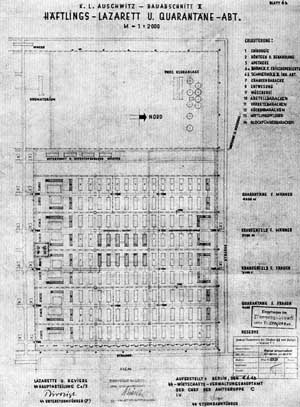
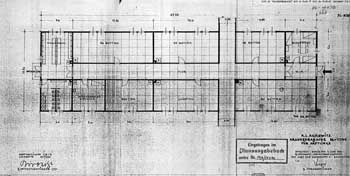
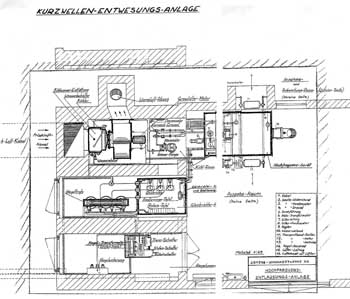
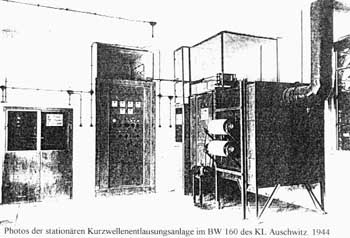
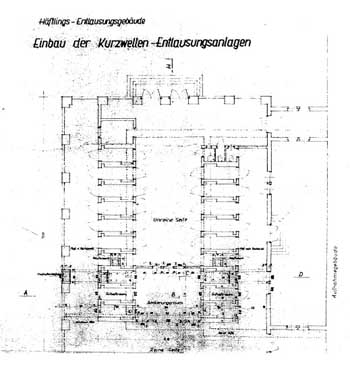

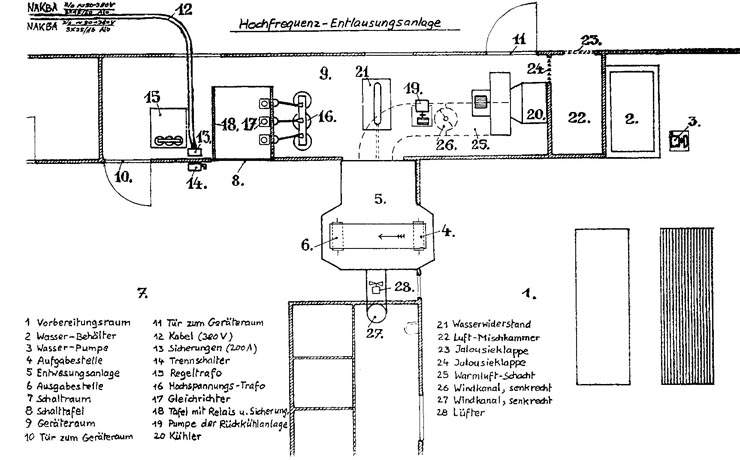


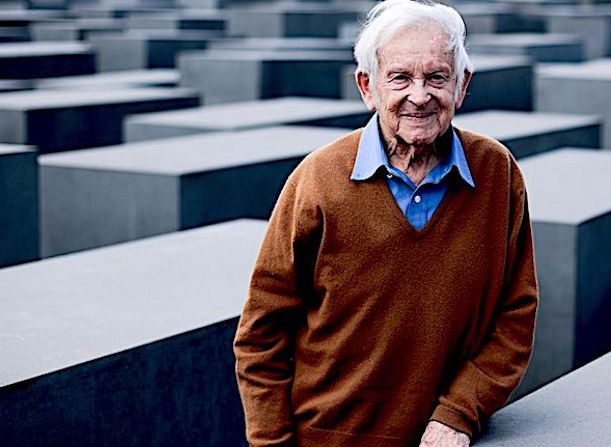


 Posted in
Posted in  Tags:
Tags: 
















